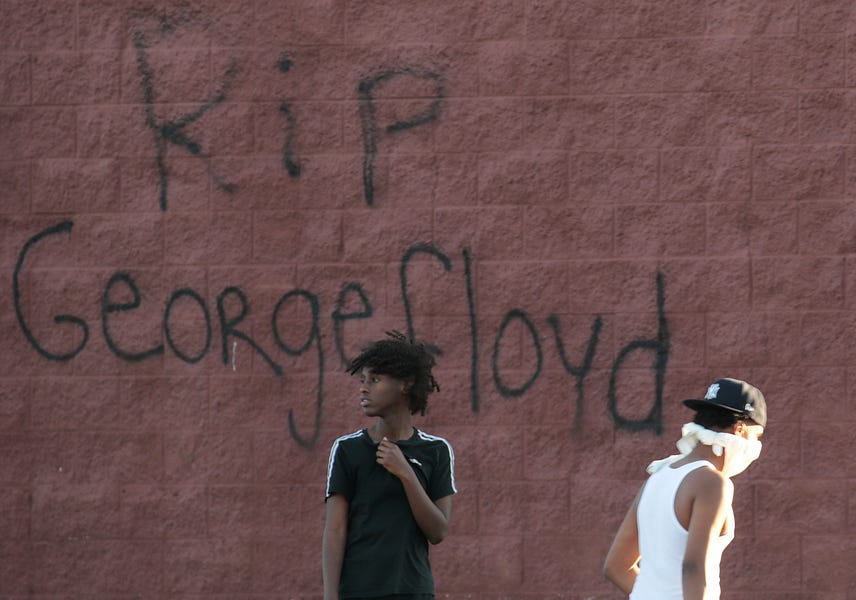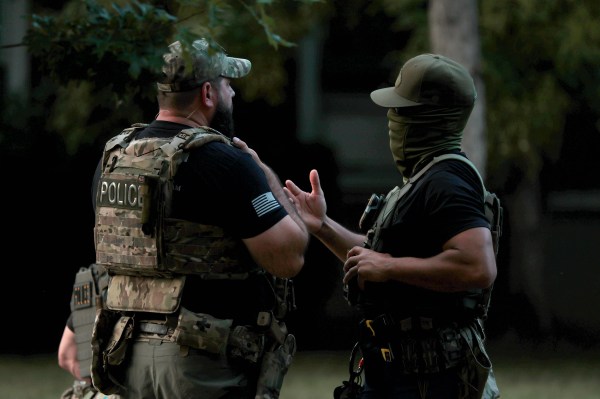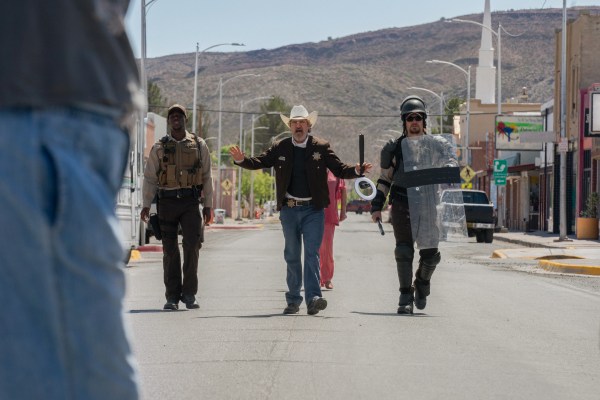Here we go again. The video of George Floyd prostrate on the pavement, a police officer’s knee on his neck for nine minutes, is truly sickening to watch. It feels almost pointless to express one’s disgust and anger at the injustice of it because the misconduct of the officer (with that chilling stare directed at the panicked and horrified onlookers literally begging for him to stop) seems so obvious. Who could defend what is depicted in that video? Thankfully, no one really has, but give it time, it’s a big country. Some people have a psychological or financial interest defending the indefensible, so they will. These people should be ignored—their goal is more to provoke than to engage in a meaningful discussion.
But even if the rest of us on planet Earth, who may not agree on much, are in broad agreement that the Floyd death represents a horrifying example of misuse of the power and authority our legal system delegates to law enforcement with the aim of protecting life, not snuffing it out, that agreement isn’t unifying. It’s sad.
The officers involved were immediately terminated by the city of Minneapolis, and a phalanx of state and federal civil rights investigators and prosecutors have been committed to investigate and presumably prosecute the case. The wheels of justice have begun to turn. Under our system of laws, that’s what should happen, and no one that matters is saying it shouldn’t.
Yet that doesn’t seem enough. People are angry. Of course, if somehow the accused officer escapes punishment as defendants, even guilty ones, sometimes do in our system, we will not want to hear a legal rationale or a chin-stroking reference to “better that 10 guilty men go free, than blah blah blah … ” But even presuming a state or federal conviction, I doubt that many of us will have the feeling that “the system worked.”
George Floyd will still be dead.
For almost 20 years, since the time I began a rewarding and brief two-year portion of my varied legal career serving as a senior official in the Department of Justice Civil Rights Division, I have followed with interest high-profile instances of alleged police misconduct. On one occasion, in 2002, I went to Inglewood, California, for DoJ after a home video showed a black teenager, hands in cuffs, getting his head slammed onto the hood of a cruiser and punched by an officer. The echoes of the Rodney King incident and riots from a decade earlier were audible throughout Los Angeles and the country as CNN played the video seemingly on a loop. The officers involved were fired immediately by the mayor of Inglewood while I was there meeting with him, local prosecutors, and FBI agents. (The mayor’s actions that day, right or wrong, probably avoided a riot.)
As it turns out, an enhanced slow motion review of the video by the FBI showed that the teen, while his hands were cuffed behind his back, grabbed the officer’s scrotum and squeezed, precipitating the punch and push to the head until he let go. The officers on the scene (unaware they were being recorded, as this was before the age of the cell-phone camera) called in supervisors to review the use of force and all prepared contemporaneous reports acknowledging what happened. Their stories matched the video of the incident that they didn’t know was being filmed. In short, they did what you would want them to after an incident when use of force is necessary—they knew their department policy, called it in to their bosses, and explained it without lying or minimizing. Neither the state nor DoJ brought charges, and if I recall correctly, an arbitrator upheld the officers’ union grievances to the firing and they were rehired with back pay after a year or two. Legally, the State of California and DoJ made the right call—the use of force was not criminal, and was likely justified by the circumstances.
The Inglewood saga is just one example of the fact that, viewed through the lens of the legal standards applied in federal criminal civil rights case for “willful” deprivations of constitutional or statutory rights, police misconduct cases must meet a very high bar. Moreover, “narratives” that develop around high profile civil rights cases sometimes don’t withstand close factual scrutiny. In 2014, I predicted within a week of the Michael Brown incident in Ferguson, Missouri, that no federal charges would be brought, notwithstanding the strength of the “Hands Up! Don’t Shoot” narrative at that time. Eventually, the Holder Justice Department issued a report going beyond a decision not to charge—it essentially cleared officer Darren Wilson and concluded that his use of force was proper. Similarly, state charges weren’t successful and no federal charges were brought in the Freddie Gray case in Baltimore, a case involving a handcuffed Gray allegedly being given a “rough ride” in the back of a transport vehicle, which resulted in injuries from which he never recovered.
So, what do these cases where the officers were cleared have to do with George Floyd, a case where, it seems, the evidence appears cut and dried and some conviction seems likely?
These cases are instructive because they involve black men. Regardless of the result, they all demonstrate that the issues surrounding how our society, including but not limited to the police, perceive and treat black men, cannot be adequately addressed in the context of the prosecution of an individual case, regardless of the outcome.
It is not that the charging decision or verdict in a given case doesn’t matter—it clearly does. But a civil rights prosecution of an officer asks narrow questions about a snapshot in time: Did the officer, at the time force was used, have a reasonable fear for death or imminent bodily harm to justify it? Did the officer approach the situation intending to deprive the victim of federally protected rights?
Applying these standards, as a lawyer with some familiarity with the relevant law, I can tick through a list of high-profile police misconduct cases that weren’t prosecuted, as well as those that were, and find that most reached the “correct” result applying existing legal standards. On one very important level, “the system” worked in such cases—a criminal prosecution was or was not legally warranted. It is easy under such circumstances to look at unrest or even rioting in minority communities in response to a decision not to charge and wonder: “What are people complaining about? The legal outcome was correct!”
But the answer is simple, if troubling: The law, even applied correctly, doesn’t remedy what we know is wrong. We can hope that the George Floyd killing can provide some insight into the feeling of frustration in many minority communities surrounding policing issues, because we can see, or at least sense, the depth of the problem. Assuming the system properly tries and convicts the kneeling officer of some serious offense, will you feel any better about George Floyd’s death? I won’t. As a lawyer, I can easily analyze the narrow question of whether one officer’s conduct was legal. But that analysis is independent of the uncomfortable truth that it is hard to imagine that George Floyd wouldn’t be alive if he were white. That truth is one that our society, our culture, all of us, not just our law enforcement officers, must confront. Even if the legal system convicts one officer of one crime, that does not relieve us of our responsibility to confront our country’s truth about race. We sense that some responsibility—not legal responsibility, mind you, but something else—rests with all of us when we know, just know, that our society has shaped our law enforcement’s view of black men, black men’s view of law enforcement, and has further shaped the individuals involved through millions of encounters, presumptions, fears, and interactions that combine to make the nightmare on the video spring to life.
It is impossible to conclude that even a fully functioning and just legal system that produces the legally correct results can soothe the discomfort felt watching George Floyd stop moving before our eyes. Recognizing that law doesn’t contain all the answers should help us understand why, in those instances where that same legal system rightly exonerates the police in the death of a black man, the community where that man grew up doesn’t necessarily care as much about the “correct” legal answer in terms of use of force policy or federal civil rights law. Whether or not an individual officer is guilty or innocent may provide an answer of sorts, but it’s not to the question they are truly asking. The question on their minds is too often “would this man be dead if he weren’t black?”
Oftentimes, we know the answer in our heart, cringe, and then focus on the easier question of legality lest we get too uncomfortable thinking about it.
George Floyd is still dead.
Bob Driscoll is chair of the White Collar and Government Investigations Group at McGlinchey in Washington, D.C., and a former deputy assistant attorney general for civil rights with the Department of Justice.






Please note that we at The Dispatch hold ourselves, our work, and our commenters to a higher standard than other places on the internet. We welcome comments that foster genuine debate or discussion—including comments critical of us or our work—but responses that include ad hominem attacks on fellow Dispatch members or are intended to stoke fear and anger may be moderated.
With your membership, you only have the ability to comment on The Morning Dispatch articles. Consider upgrading to join the conversation everywhere.